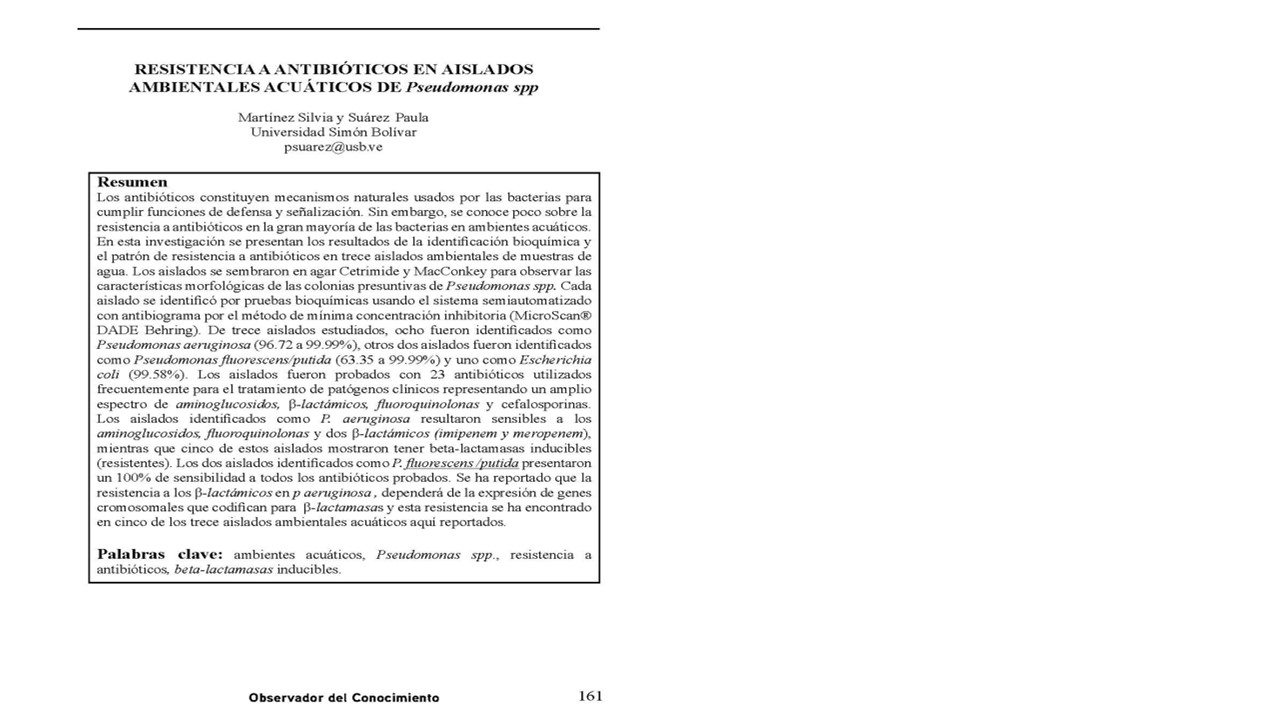Antibiotic Resistance in Aquatic Environmental Isolates of Pseudomonas spp
Keywords:
Aquatic environments, Pseudomonas spp., antibiotic resistance, inducible beta-lactamasesAbstract
Antibiotics constitute natural mechanisms used by bacteria to fulfill defense and signaling functions. However, little is known about antibiotic resistance in the vast majority of bacteria in aquatic environments. In this research, the results of the biochemical identification and the pattern of antibiotic resistance in thirteen environmental isolates from water samples are presented. The isolates were plated on Cetrimide and MacConkey agar to observe the morphological characteristics of the presumptive colonies of Pseudomonas spp.
Downloads
References
Allen, Donato, J; Huimi, H.; Cloud- Hansen, K.; Davies, J.; Handelsman, J. (2010). Call of the Wild: antibiotic resistance genes in natural enviroments. Nature reviews Microbiology. 8:251- 259.
DadeBehring. (2005). Manual de Procedimiento MicroScan®.
Kümmerer, K. (2004). Resistance in the environment. Journal of Antimicrobial Chemotherapy. 54: 311-320.
Lister, P.; Wolter, D.; Hanson, N. (2009). Antibacterial resistant P. aeruginosa: Clinical impact and complex regulation of chromosomally encoded resistance mechanisms.Clinical Microbiology Review. 22(4): 582-610.
Martínez, J. (2009). The role of natural enviroments in the evolution of resistance traits in pathogenic bacteria. Proccedings of the Royal Society. 276:2521-2530.

Downloads
Published
How to Cite
Issue
Section
License

This work is licensed under a Creative Commons Attribution-NoDerivatives 4.0 International License.







